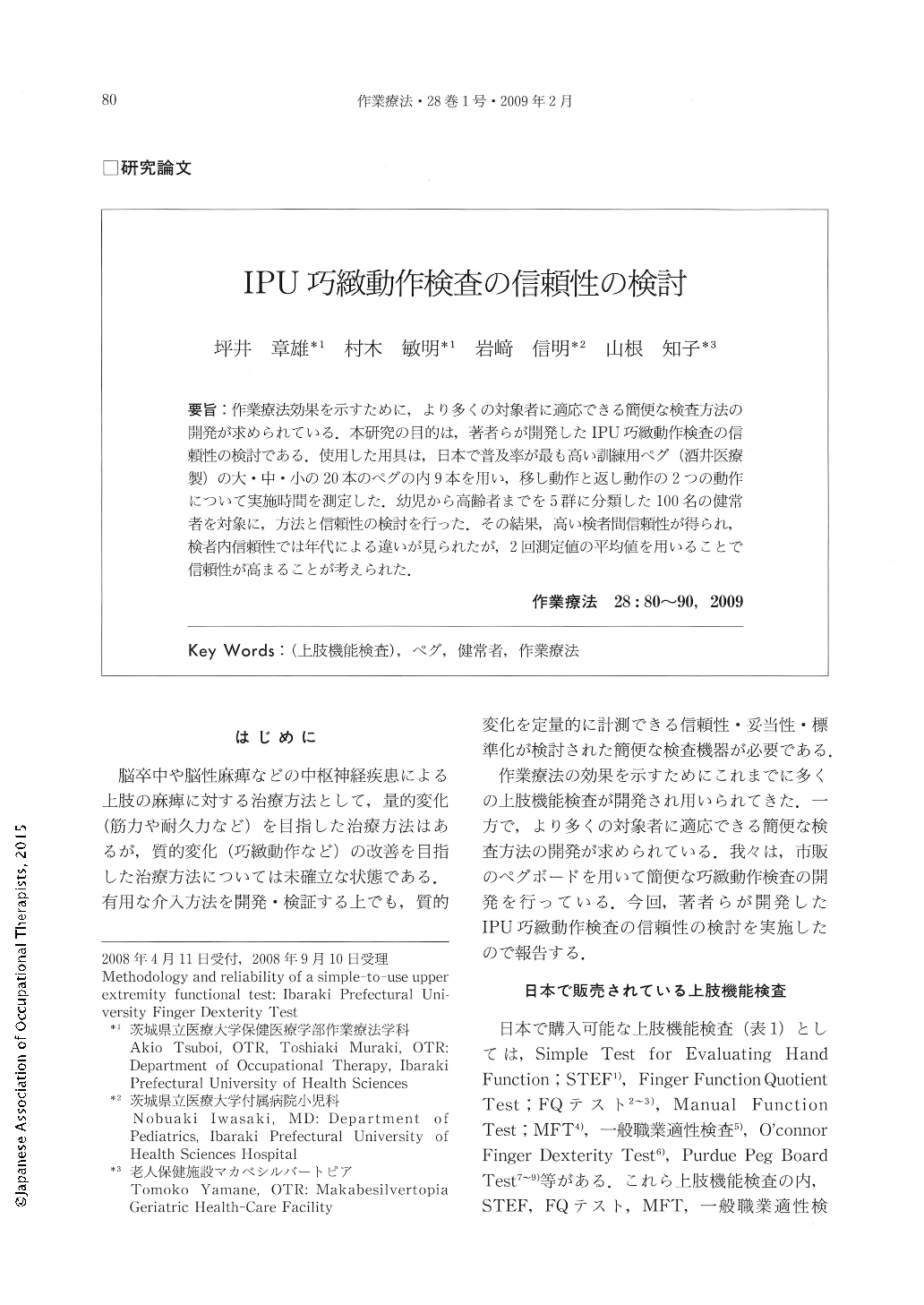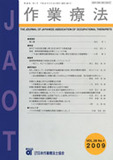Japanese
English
- 販売していません
- Abstract 文献概要
- 1ページ目 Look Inside
- 参考文献 Reference
- サイト内被引用 Cited by
要旨:作業療法効果を示すために,より多くの対象者に適応できる簡便な検査方法の開発が求められている.本研究の目的は,著者らが開発したIPU巧緻動作検査の信頼性の検討である.使用した用具は,日本で普及率が最も高い訓練用ペグ(酒井医療製)の大・中・小の20本のペグの内9本を用い,移し動作と返し動作の2つの動作について実施時間を測定した.幼児から高齢者までを5群に分類した100名の健常者を対象に,方法と信頼性の検討を行った.その結果,高い検者間信頼性が得られ,検者内信頼性では年代による違いが見られたが,2回測定値の平均値を用いることで信頼性が高まることが考えられた.
Several upper extremity functional test batteries have been developed, which have revealed some clinical findings of occupational therapy. However, due to the batteries' cost effectiveness and extended length of time of measurement, there remain some difficulties in performing them at the clinical setting, resulting in their infrequent use. The purpose of this study was to determine the clinical feasibility of the Ibaraki Prefectural University Finger Dexterity Test (SAKAI pegboard), the most frequently utilized test battery in Japan. One hundred healthy subjects ranging in age from 3 to 69 years participated in this study and were categorized into 5 age groups: infants, school children, the young, the middle-aged and the elderly. In this test battery 3 different kinds of pegs were used: a set of 9 large, 9 medium-sized and 9 small pegs. The rate of moving the pegs from right to left, and overturning the peg in the same hole were measured. Methodology and reliability were examined, indicating high inter-rater reliability. In intra-rater reliability, age differences were observed, but the use of the mean values demonstrated higher reliability, suggesting that this pegboard may be used as a simple-to-use test battery for measurement of upper extremity function.

Copyright © 2009, Japanese Association of Occupational Therapists. All rights reserved.


